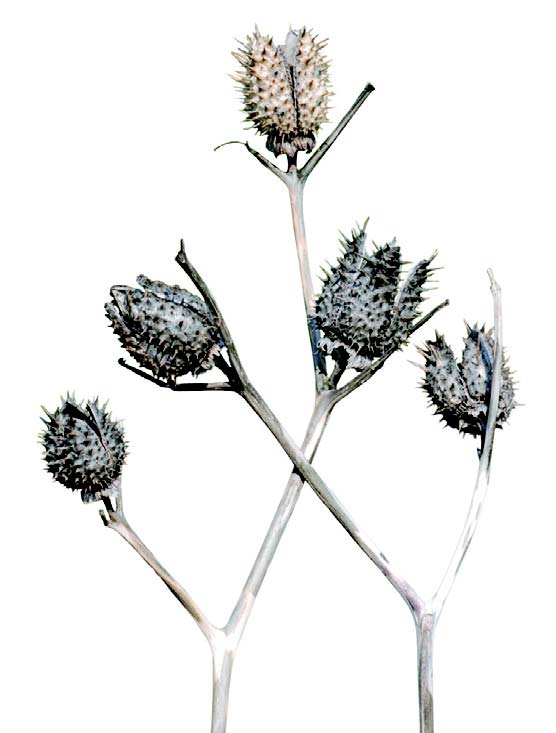- 글로벌메뉴
- KOREAN

 Korea Biodiversity Information System > Plant Resource > Plant Classification > Naturalized Plants > What is a naturalized plant?
Korea Biodiversity Information System > Plant Resource > Plant Classification > Naturalized Plants > What is a naturalized plant?
Our environment is facing great changes from industrial development and international exchanges. Although these changes progressed gradually in the past, recent transitions have been abrupt and are recognized as remarkable. One representative change is the strange transformation of the environment by the appearance of exotic and alien plants. Alien plants usually refer to plants that are either naturally or artificially introduced from foreign locations, but this can be further divided into introduced and naturalized plants. Introduced plant refers to one that had been brought in for cultivational or horticultural purposes, while a naturalized is one that has survived in the ecosystem on its own and found its own way to coexist. A plant that does harm to the ecosystem, economy, or humans is called an invasive plant.

Naturalized plants are generally annual rather than perennial, and are also usually herbaceous plants rather than xylophytes. There are fewer xylophytes than herbaceous plants because xylophytes have limited general distribution, slow growth, and a smaller number of organisms to be judged as naturalized plants. The general characteristics of naturalized plants include a short vegetative growth period and a long reproductive growth period, and thus they produce and disperse a number of seeds throughout their lives. For example, Senecio vulgaris blossoms in late March and its fruits ripen; its vegetative growth period continues until fall and it produces a large amount of seeds. It is reported that Solidago altissima produces 700,000 to 1 million seeds per plant, and Aster subulatus produces 500,000 to 700,000 seeds per plant. It is also reported that many seeds are produced even in unfavorable conditions. Erigeron Canadensis, Erigeron annuus, and Erechtites hieracifolia grow to about 2-10㎝ in height between cracks in asphalt and in dry places on rocks. Even with one to three leaves, they show formidable reproductive ability, sprouting a couple of flowers and producing 20 to 60 seeds.
Naturalized plants are mostly those that grow in direct sunlight, including within cities and their surrounding regions, on roadsides, beside streams, in wastelands, farmland, around forest roads, and on ridge trails. While naturalized plants are unable to invade well-developed forests, some naturalized plants, such as Ambrosia trifida, Crassocephalum crepidioides, and Eupatorium rugosum are semi-shade plants that grow under trees, such as Acacia trees. They also have their own strategy to enhance their survival rate. Biennial plants such as Erigeron annuus, Hypochaeris radicata, Oenothera biennis, and Lepidium virginicum form rosettes with their leaves to prevent the growing plant from freezing; some organisms self-pollinate to allow self-proliferation; and others germinate without strict requirements. The most frequent emerging period is the spring, followed by summer and fall, and the species that emerge in early spring seem to strategically avoid competition with other plants.
Naturalized plants before 1876 are assumed to have come from China during trade; as exact trade routes are difficult to uncover, these plants are called pre-record naturalized plants, as compared to neo-naturalized plants that entered Korea after the port opening in 1876.
Park (1994) divides the naturalization time into three main categories according to time of introduction. (Table 1). The time from port opening to Mori's domestic survey (1921) is regarded as the first period, while Lee and An's "Korean Plant Dictionary" (1963) is regarded as the second period, and from that time until the present is the third period. During the first period, many foreign plants were introduced through Japan after the port opening; in the second period, no proper plant survey was done due to The World War II and the Korean War (1950-1953); in the third period, plant study began and the number of foreign plants increased explosively due to the acceleration of modernization.
| 1st period | 2nd period | 3rd period |
|---|---|---|
| After port opening-1921 | 1992-1963 | 1964 to the present |
The degrees of naturalization were divided into five classes, depending on the distributional characteristics stated by Kariyama and Kobatake in 1988 (Table 2). However, the degrees of naturalization are not fixed due to a plant's distribution characteristics, so they may change with time.
| Class | Distribution types |
|---|---|
| Class 5 | wide distribution and large population |
| Class 4 | local distribution but large population |
| Class 3 | wide distribution but small population |
| Class 2 | local distribution and small population |
| Class 1 | Rare |